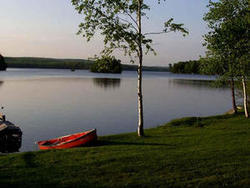words + photos by Janet Schneider
On a recent 20-mile bike ride along Torch Lake Drive in Northern Michigan, I expected to see beautiful views of what National Geographic has called “the third most beautiful lake in the world.” However, from the road, I saw very little of the lake. Most of the houses were also concealed from sight. Instead, I noticed the wooden signs sprouting at the end of driveways like mushrooms, or attached to mailboxes like antlers.
 These signs contained not only the homeowners’ but their properties’ names as well. Similar to the language found on boats, these often were terms of endearment or hopeful expressions of escape, fun and abandonment. While admiring these intricately decorated signs, I speculated about the inhabitants’ lake lives and recalled my own memories of lakeside cabin life.
These signs contained not only the homeowners’ but their properties’ names as well. Similar to the language found on boats, these often were terms of endearment or hopeful expressions of escape, fun and abandonment. While admiring these intricately decorated signs, I speculated about the inhabitants’ lake lives and recalled my own memories of lakeside cabin life.
From my bike height perspective, I was in the perfect position to focus on these owner-selected symbols of lake activity. It was clear from the choices made about their signs: shapes, materials, colors, font styles, and images, owners took tremendous pride in these homes. These signs were primarily made of wood, engraved with colorful scenes of lakes and their wildlife including birds such as loons, herons, or eagles. I cycled by painted images of natural settings with sand, plantings, the sky, and the sun. I slowed down at one memorable sign, an enlarged photograph of a golden sunset over a lake.
It is common for Southeast Michigan residents to own a cabin “Up North.” Many of these have been passed down and bring to mind happy inter-generational family memories. Families travel to these special places on weekends throughout the year and in the summer. They only differ by size, location (lake access the most treasured), and amenities such as a dock, deck, screened-in porch, or remodeled kitchen.
It was a perfect day for cycling – 70 degrees and overcast in late afternoon.
